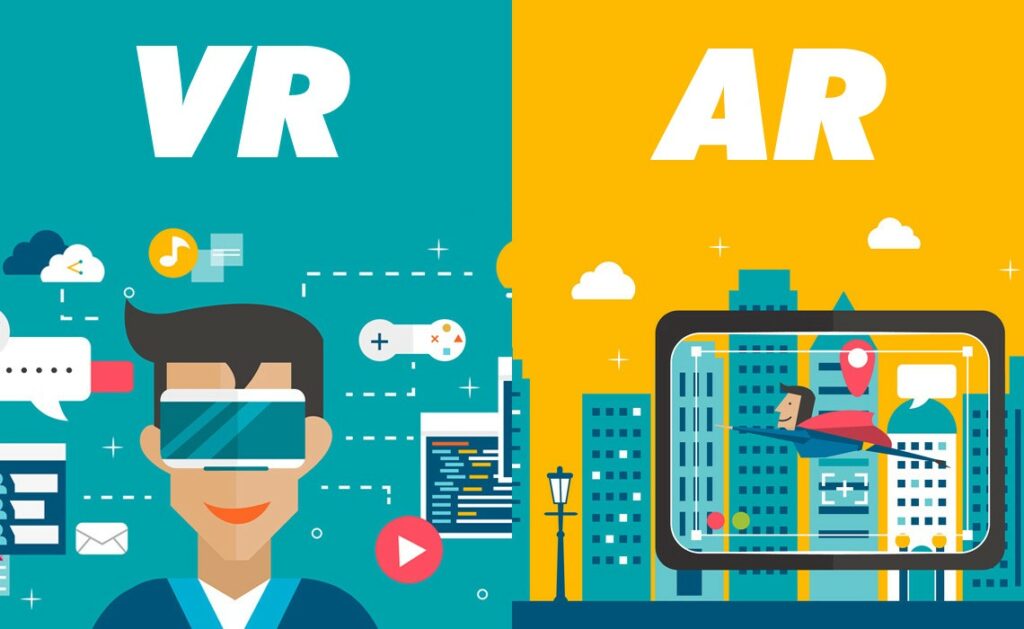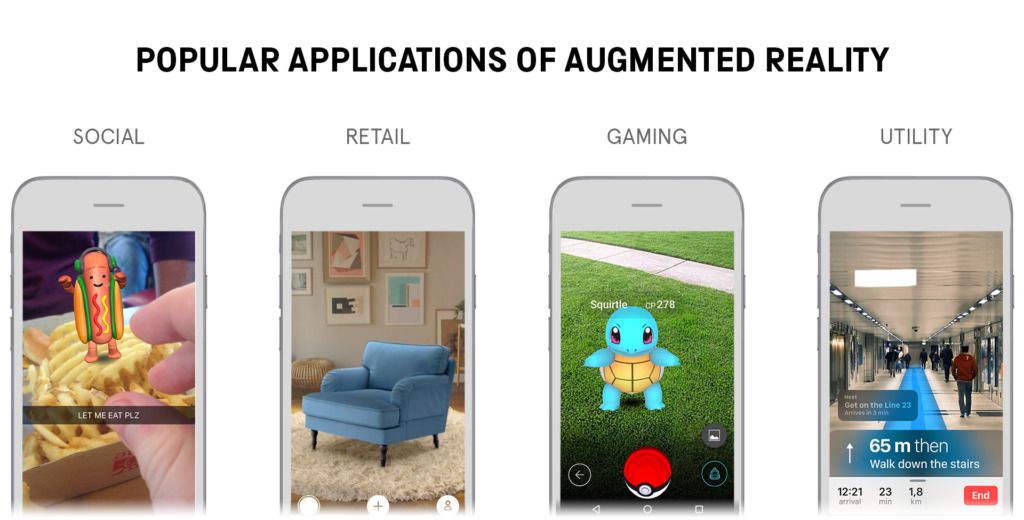In my second blog entry, I dive deeper into topic of the technology behind virtual fitting rooms – Augmented Reality. My research should lay the groundwork for understanding how AR works and how it can be used in a fashion context.
And what exactly is Augmented Reality?
Augmented Reality (AR) is available on any camera-equipped device – mostly on smartphone and tablet – and on which the corresponding AR software is installed. AR adds digital content onto a device’s live camera feed, making the digital content seem to be part of the real world. Unlike Virtual Reality (VR), which replaces reality with a completely digital environment, AR enhances the real world by digital information overlay or virtual details, which means the real environment remains central to the user experience.

Widely known and used examples of AR are for instance Pokémon Go and Ikea App. The picture below shows a range of different applications and fields, taking advantage of AR.

But how does AR work?
When a user points the device’s camera at an object, the software recognizes it through computer vision technology, which analyzes the content of the camera feed. The device then downloads information about the recognized object from the cloud and presents the AR information as an object overlay in a 3D experience. The content displayed is part real and part virtual. Computer vision determines an object in terms of semantics (what) and 3D geometry (where). First recognizing an object, then understanding it’s 3D position and orientation. With geometry, it is possible for the rendering module to display the AR content at the right place and angle, which is essential for a realistic AR experience. AR is real-time 3D or in other words it is live, which means the process explained above has to occur every time a new frame comes from the camera (most smartphones today work at 30 fps). As a result, when moving a device, the size and orientation of the augmentation adjusts to the changed context automatically.
Finally: AR & fashion?
Yes – one field of application for AR are virtual try-ons. However, the experience should go beyond the aspect of trying on clothes, and it has to be said that AR cannot yet completely replace a real try-on due to the lack of display quality. The key aspect in such experiences is the part real and part virtual aspect of AR (person = real and garment = virtual).
According to Vogue Business, the “AR clothing try-on is nearly here” and it “is getting closer to reality, and the pace of acceleration is increasing”. Companies and start-ups are working on improving try-on capabilities with updates including 3D body mesh to define 3D shapes, cloth simulation and its behavior more precisely. Since there are many interesting possibilities for in-shop-experience and online-experience, investors and tech companies see a great potential in AR clothing. The value of the technology is extended beyond its entertainment aspect.
In my next blog entry, I will focus more on the benefits of AR clothing and how it could potentially solve current problems concerning the fashion industry with a focus on e-commerce.
References
https://hbr.org/2017/11/how-does-augmented-reality-work
https://www.robotlab.com/blog/what-is-the-difference-between-ar-and-vr
https://www.voguebusiness.com/technology/why-ar-clothing-try-on-is-nearly-here